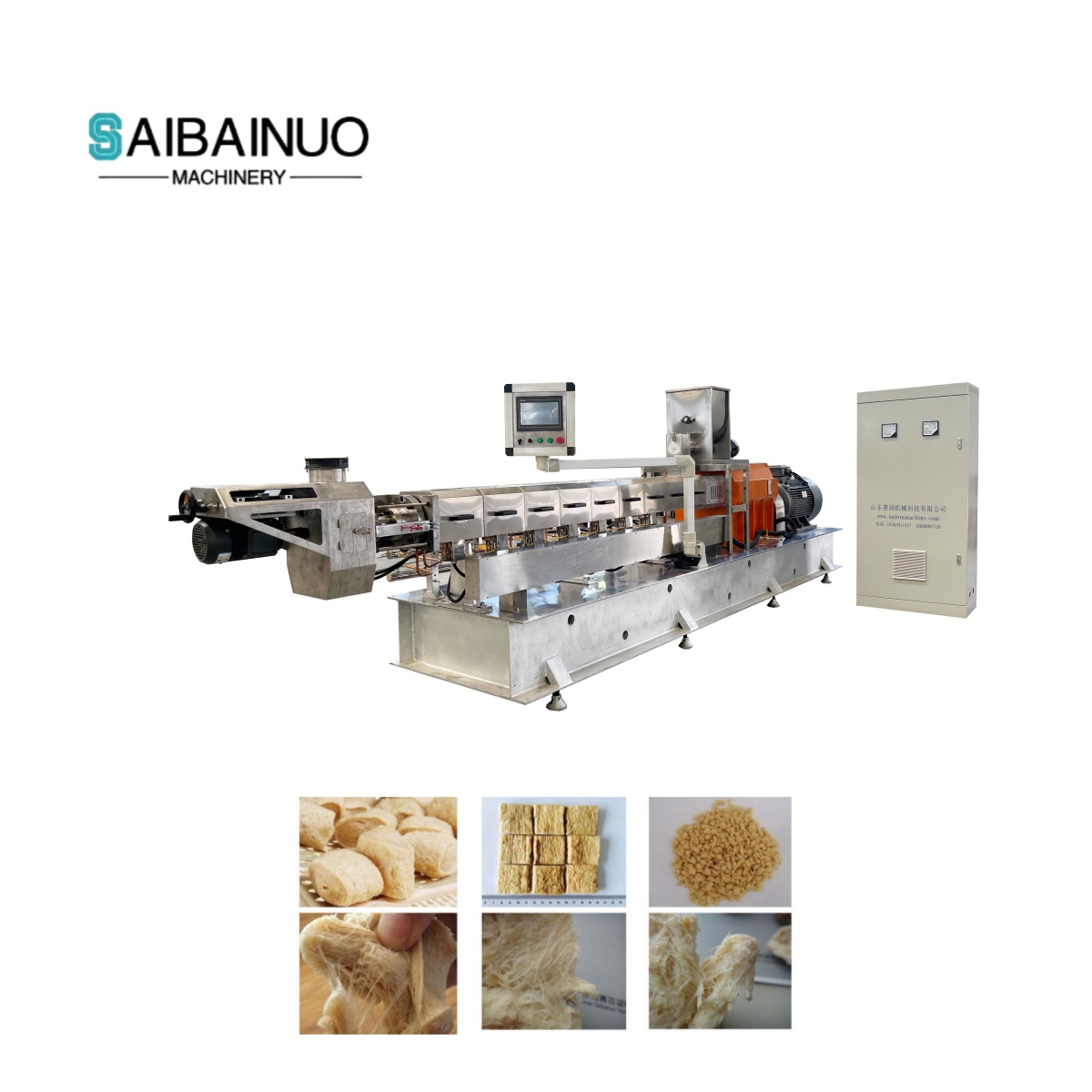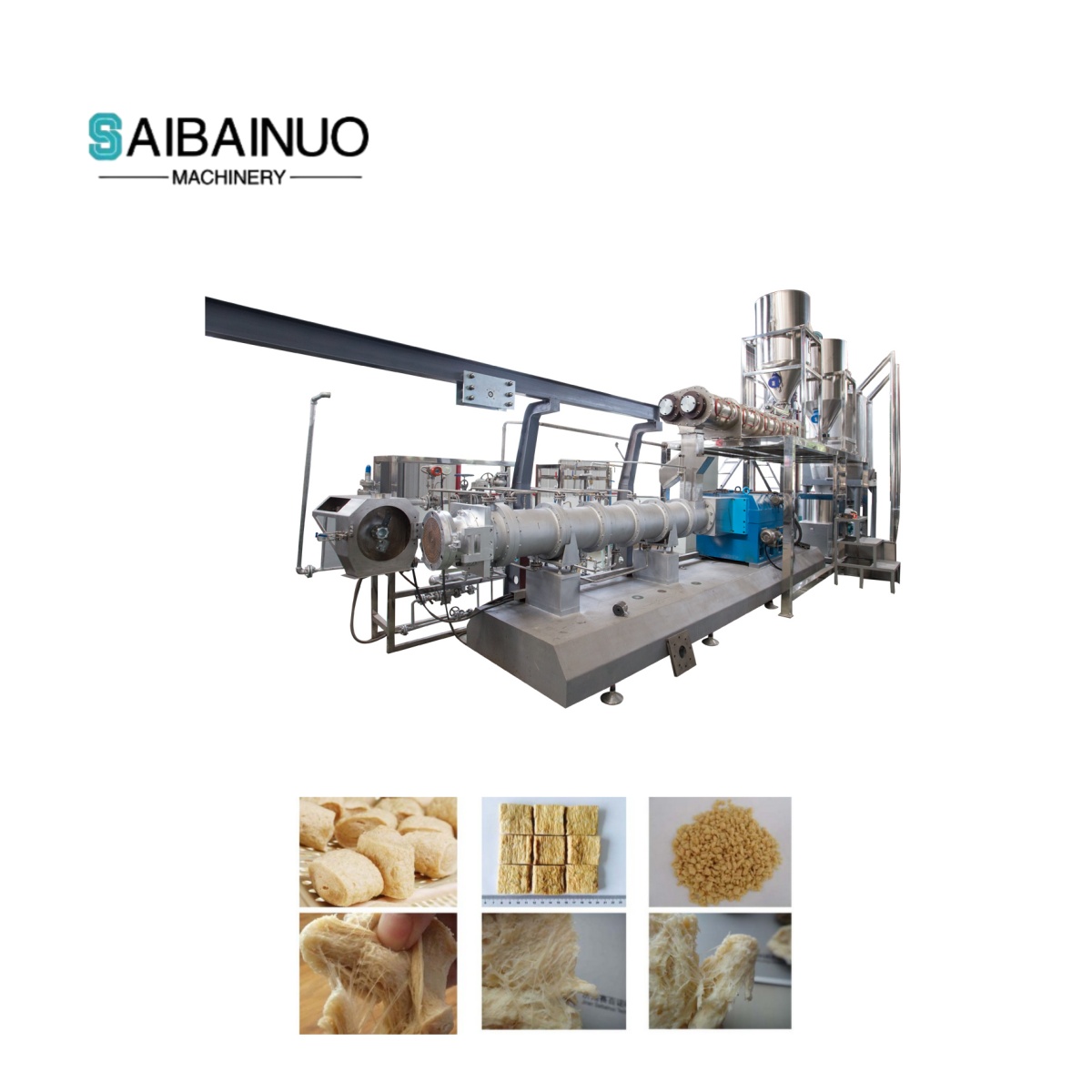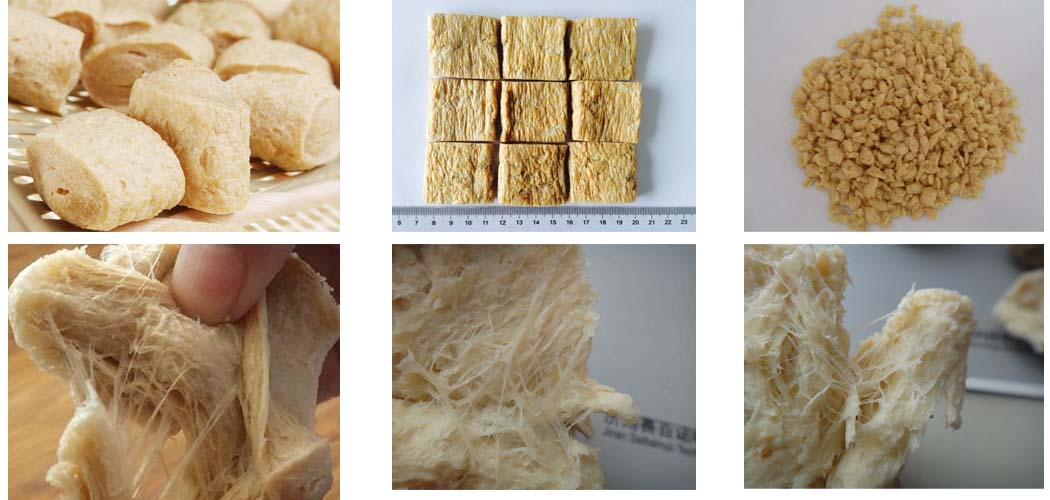Textured Vegetable Protein Machine Line
Textured Vegetable Protein Machine Line is designed and produced with rich experiences on food extruder industry over 10 years. it adopts nonfat low temperature soy bean meal as main raw material to produce all kinds of textured protein food, which is nutritional and easily absorbed by human body.
Textured Vegetable Protein Machine Line Video:
Main raw material: Defatted soy Meal, Soy protein,Wheat gluten
Product: Textured Soya Protein(TSP), Textured Vegetable Protein(TVP)
Capacity:260kg/hour, 600kg/hour and 1000kg/hour
Machine material: SUS304
Electric parts brand: SIEMENS
Textured Vegetable Protein Machine Line Description:
Textured Vegetable Protein Machine Line uses low temperature soy bean meal as main raw material to produce all kinds of textured protein food with high nutrition. As the textured soya protein is tasted like meat so it is welcomed by vegetarians. The textured soya protein machine is popular for many countries especially for developed countries who have more requirement for body health.
Textured Soya Protein Sample:
Here are some samples of products produced by textured soya protein machine.
Textured Vegetable Protein Machine Line Parameter:
The parameter of textured vegetable protein machine line.
Model | Install Power | Real Power | Capacity | Dimension |
SLG65-IV | 110KW | 77KW | 250kg/h | 20x 2.0 x 3.0 |
SLG65-V | 135KW | 95KW | 300kg/h | 25x 2.0 x 3.0 |
SLG85 | 210KW | 147KW | 600kg/h | 32x 2.0 x 4.0 |
SLG95 | 300KW | 200KW | 1200kg/h | 40x 2.0 x 5.0 |
Product Features:
The textured soya protein machine has some advantages:
*Low product cost and high profit.
*The textured soya protein can be made into various shapes such as ball, pipe and so on.
*The durable screws are made by alloy steel and special craft.
*Visible auto-temperature controlling system with precise temperature viewing.
*High automation machine with easy operation.
Machine Process:
1. Raw Material Mixing
Soy base (flour or concentrate) is combined with water, vitamins, or binding agents in a high-speed mixer. The homogeneous slurry is prepared with precise moisture control to optimize extrusion performance.
2. High-Temperature Extrusion & Texturization
The mixture is fed into a twin-screw extruder, where mechanical shear and steam restructure the protein into fibrous layers. Adjustable die molds shape the product into strips, cubes, or granules to mimic various meat textures.
3. Precision Cutting
A high-speed rotary cutter slices the extruded output into uniform pieces immediately after extrusion. Customizable blade settings allow for diverse product formats.
4. Multi-Stage Drying
The cut TVP enters a multiple-layer dryer, where controlled heat (80–100°C) reduces moisture. Even drying prevents brittleness and ensures storage stability.
5. Flavor Application
Dry TVP pieces are tumbled in a seasoning mixer with spray nozzles for liquid marinades or powder coatings. Optional steps include oil infusion for juicier textures or color enhancement.
6. Cooling & Stabilization
A vibrating cooling conveyor lowers the product temperature to ambient levels, locking in crispness and flavor. Dehumidified air may be used to prevent condensation during packaging.
Output & Flexibility
Final products range from neutral-taste TSP (for further processing) to pre-seasoned ready-to-eat variants.
Whatsapp: 86 18406585795
Ms. Vivian
Related Products
Related News
Submitted successfully
We will contact you as soon as possible






